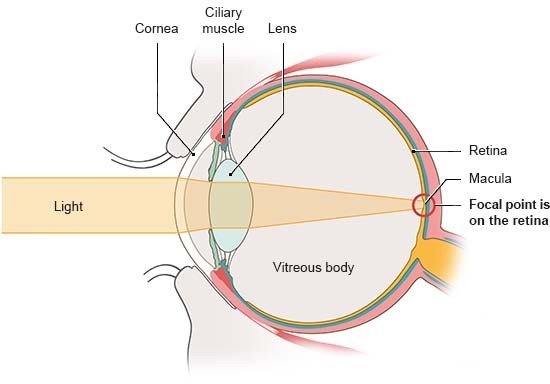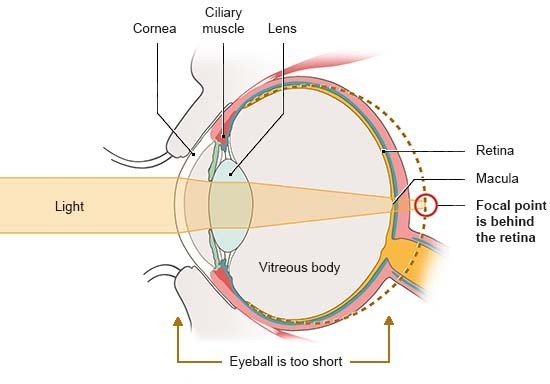Introduction

Many people are familiar with the problem of being able to read street signs, but then having problems with the words in a book becoming blurry when held too close. This is often caused by farsightedness. Then you can see things in the distance well, but things close to you are unclear. Although people who are farsighted typically are born with it, it is often only noticed in adulthood.
Our close-up vision always gets worse as we grow older, usually starting in our mid-40s. This is officially known as “presbyopia” and is also sometimes referred to as “age-related farsightedness.” It is part of the normal aging process and has different causes than regular farsightedness. Farsightedness can make presbyopia worse, though. The medical term for farsightedness is "hyperopia." It is not a disease, but is instead considered to be one type of refractive error, along with shortsightedness, astigmatism and age-related farsightedness.
Glasses or contact lenses can effectively correct the vision problems caused by farsightedness. Operations such as laser eye surgery are sometimes an option for adults, too.




